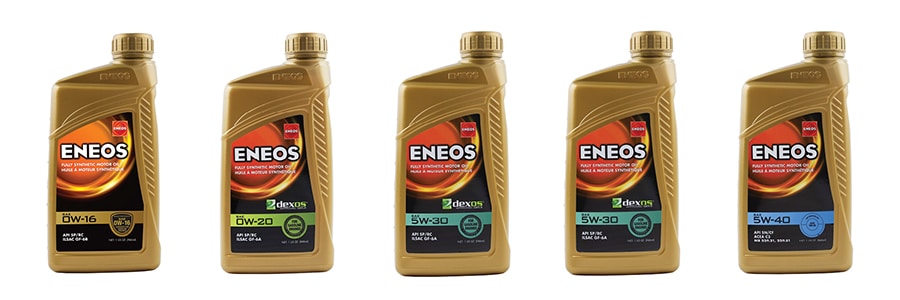As automotive technology has evolved, a variety of factors have come into effect when considering the ideal time for changing the oil in your vehicle.
One particular topic with a wide range of factors and opinions in the automotive maintenance world are recommended oil change intervals.

Standard oil change intervals
There was a time when a conventional oil, lube & filter interval standard was 3,000 miles or 6 months. Certainly a lot has changed since those days both in terms of engine designs and in the quality of oil, especially with the advent of synthetic oil. In spite of these changes, there are many in the industry who still adhere to the 3,000 mile standard of oil changes. Perhaps one could argue that if a low grade conventional or re-refined oil is used this is still true, but it is no longer the paradigm for many vehicles in the market.
Today’s cars have oil change intervals, as per manufacturer recommendations, of anywhere from 5K, 7.5K, 10K and even up to 15K for some models. Most manufacturers currently incorporate oil service lights in their design to alert drivers when it is time for a service, which can be based on factors such as miles driven and types of driving conditions.
“Severe” driving conditions impact intervals
Most, if not all, factory manuals also list intervals for normal and severe driving conditions. Under severe conditions, oil changes are to be done twice as often. Some severe conditions listed are:
- Driving on dirt roads or dusty roads
- Driving while towing, using a car-top carrier, or heavy vehicle loading
- Repeated trips of less than five miles in temperatures below 32 degrees
- Extensive idling and/or low speed driving for a long distance
It’s also worth noting repeated trips of a short distance where the oil never gets to the prescribed temperature–where it can burn off moisture and other impurities–can require more frequent change intervals. Some manufacturers include driving in hot weather, stop-and-go traffic, and driving at speeds less than 50 mph for long distances.
These all may sound far less like “severe” conditions and more like everyday driving habits for most drivers. If you drive in rush hour traffic, regularly haul a heavy load, have a short commute, or frequent quick trips to school to pick up the kids, your driving probably falls into the “severe” category. Recommendations to wait longer between oil changes do not apply to a lot of today’s vehicles. And yet, many drivers do not know it.
Other interval factors
Now that you have a better idea of what circumstances might dictate more frequent oil changes, let’s look at other important issues that can influence this decision.
Time is one, because oil becomes less effective as it ages, and older oil is less effective at protecting engines. So if, for instance, a vehicle is driven only 5K miles per year, it could still be recommended to have the oil changed each 6 – 12 months depending on the manufacturer’s recommendation.

Another important factor is the type of oil used in the service. There are three types of oil available for passenger vehicles: conventional, semi-synthetic, and full synthetic. Most automotive manufacturers stopped using conventional oil years ago, and few used a semi-synthetic blend because full synthetic oil was preferred due to its enhanced protection and performance. However, if a vehicle’s owner uses conventional or semi-synthetic oils, which are less expensive products, more frequent oil changes are required.
The vast majority of automakers are using full synthetic oils as a factory fill (what is developed for use when cars roll out of the factory, and what is intended for use throughout the vehicle’s life), and vehicle owners should insist on this as well. Using a synthetic oil will typically result in longer intervals between oil changes.
How intervals impact sludge
One of the reasons automakers are using full synthetic is because it is more effective at resisting fluid breakdown (and because of that, it lasts longer), and withstands higher temperatures. Resistance to breakdown extends the protection and helps prolong the life of your engine.
Synthetic oils can also help with engines that are prone to sludge buildup, as seen in some VW and Toyota models. Sludge, formed when oil breaks down, can block the flow of oil, leading to expensive repairs or catastrophic failure. If a type of oil that is not approved by a vehicle’s manufacturer is used, it may not hold up and could exacerbate a sludge condition.
Your time between oil changes should take into consideration the factors that contribute to sludge, such as longer change intervals, engines with known sludge issues, and the type of oil used.
Determining oil change intervals
It’s important to talk with a service advisor about how a vehicle is used, mentioning any of the above, relevant conditions, instead of defaulting to a blanket recommendation. Ideally, a dealer, performance shop, or reputable parts store can provide guidance for your specific needs.
In addition to having oil changed on a regular basis, it is equally important for vehicle operators to check the oil level once a week or when filling the vehicle’s gas tank. If oil levels drop between oil changes, the oil that remains has to work harder and breaks down faster. This is an indication to schedule a service and talk with your technician about potential service needs or shortening time between oil changes.
Hopefully this information will help to make more informed decisions with change intervals or recommending oil products. Although high quality products like ENEOS can help with performance and protection, neglected oil change intervals can ruin any oil, even top end synthetic oils like ENEOS.

